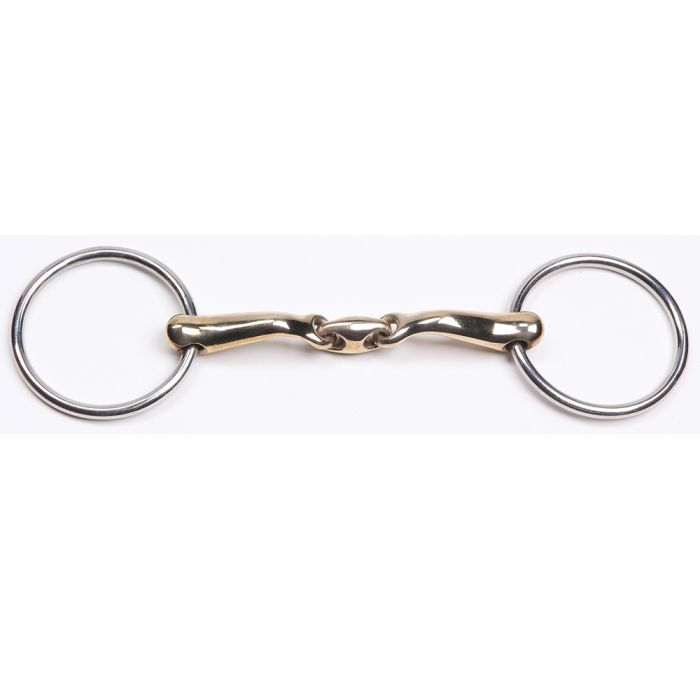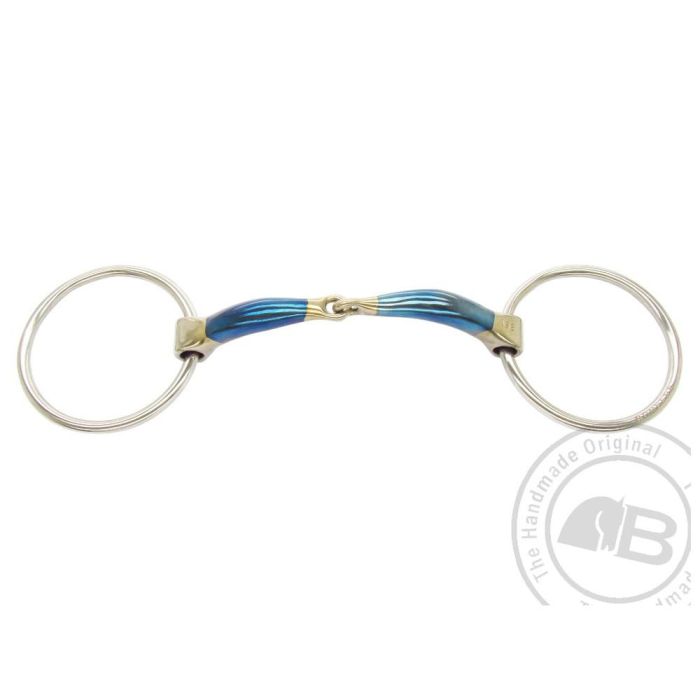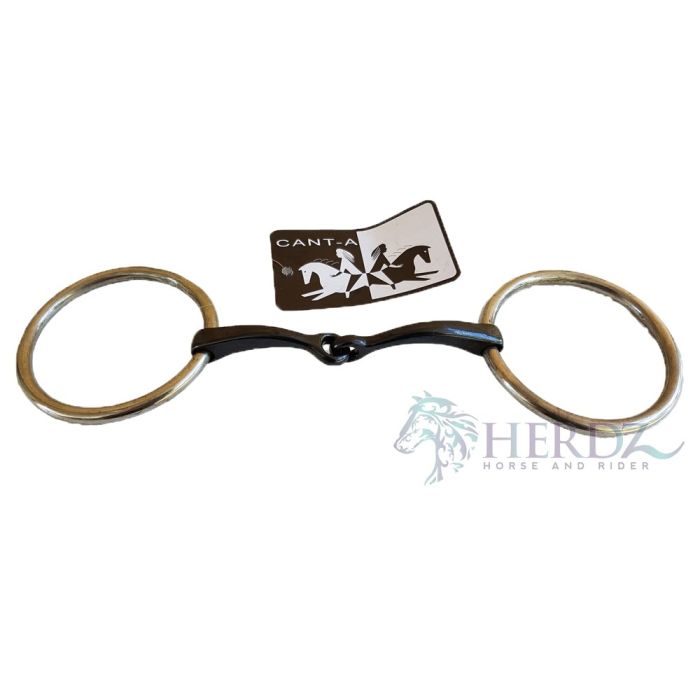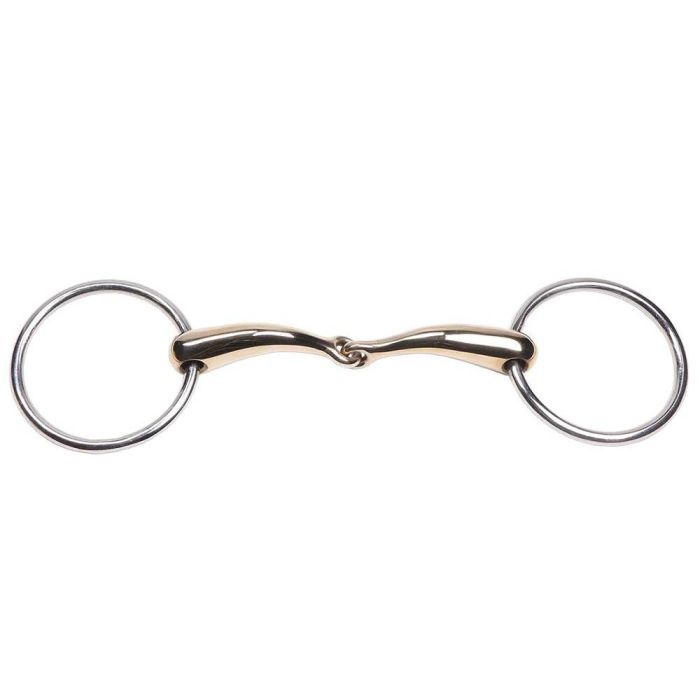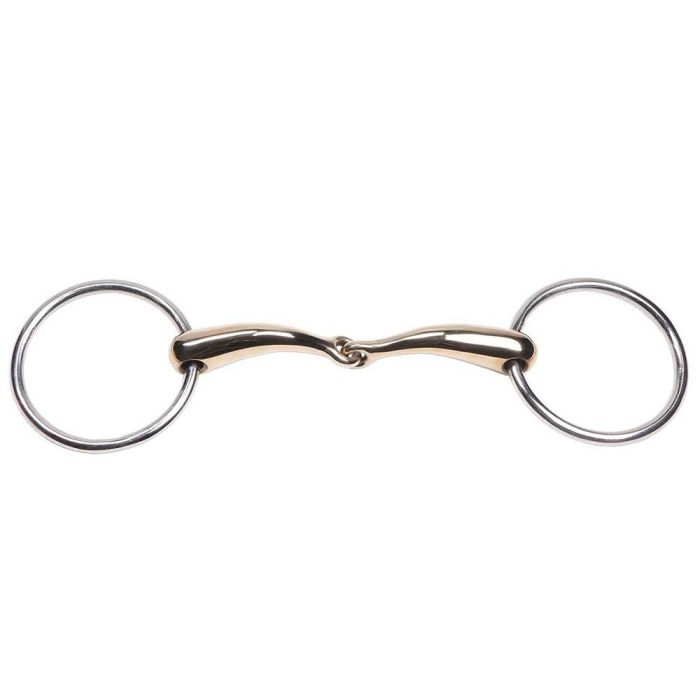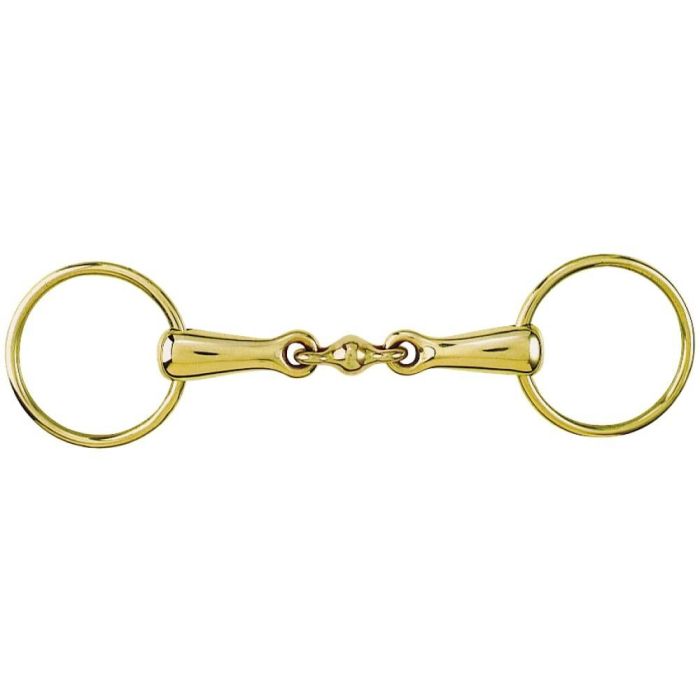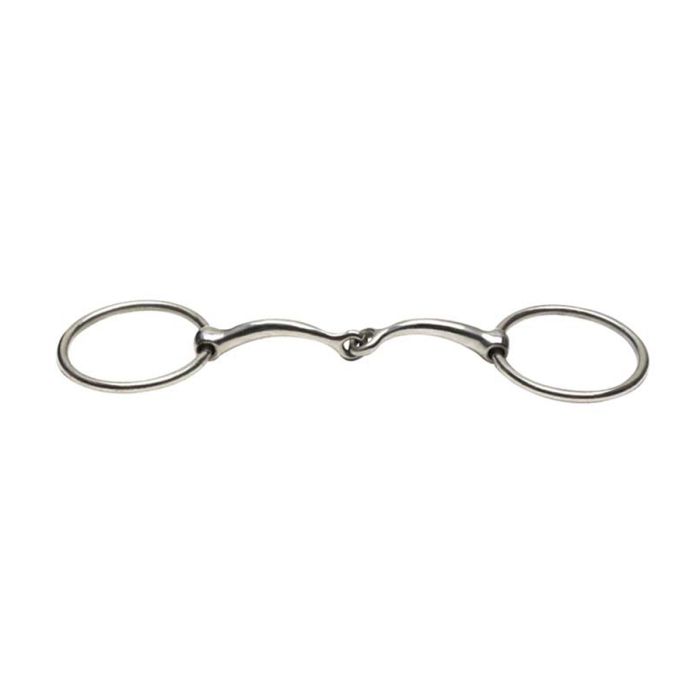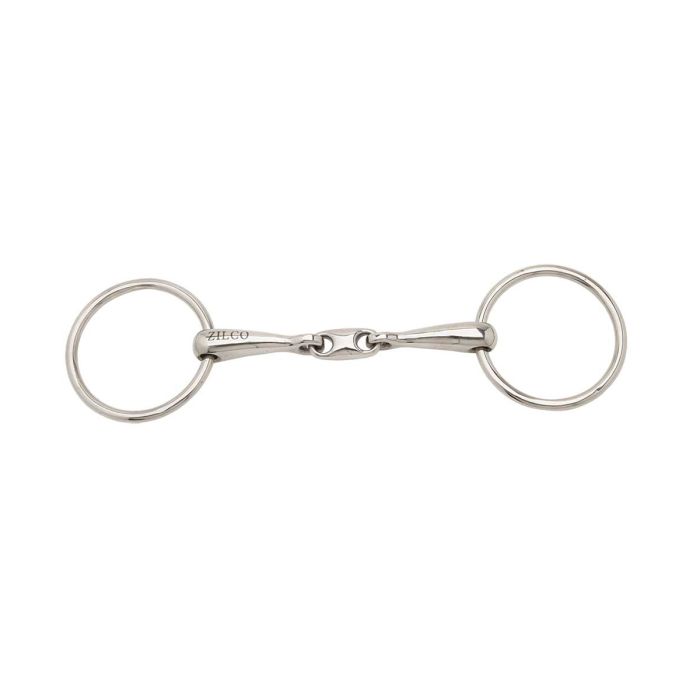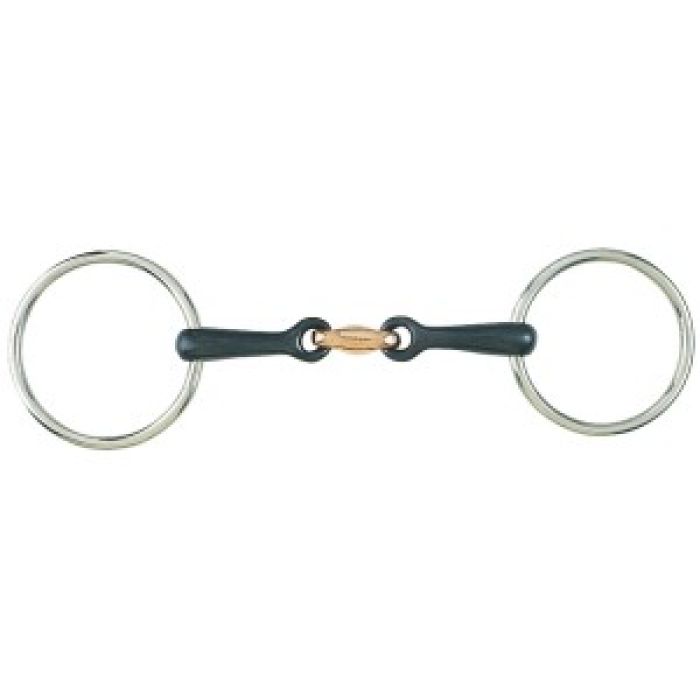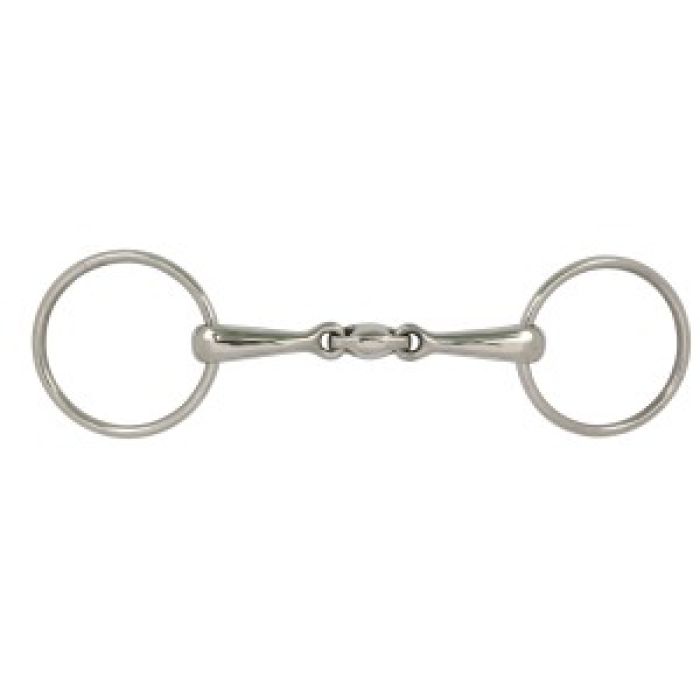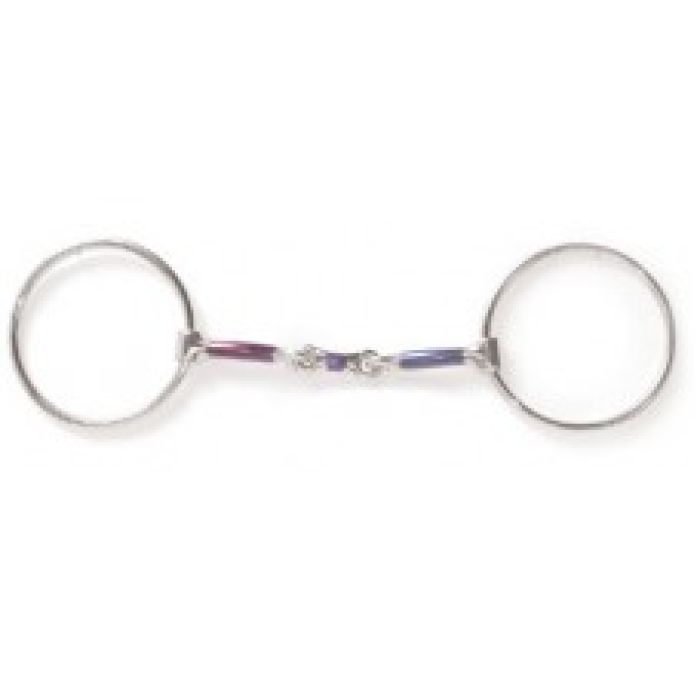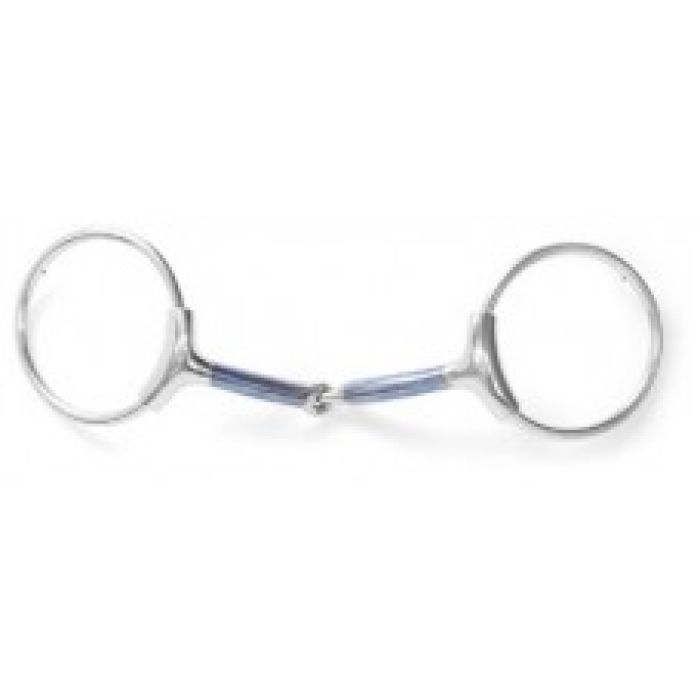The basic principle of a snaffle bit is that control over the horse is achieved through direct pressure on the corners of the mouth and on the lower jaw.
The general effect of this pressure is to draw the head upwards and inwards. There is great variation in snaffle bits, which allows them to put more or less pressure on the three points of contact: the lips, bars, and tongue.
Bits like the full-cheek and dee ring snaffles are designed to put more pressure against the sides of the lips and hence aid in turning control. Unjointed snaffles, like the mullen mouth, put more pressure on the tongue, while jointed bits transfer more of that pressure to the bars.
We will consider three types of variation in the snaffle bit: the type of joint(s) or lack thereof, the type of cheek piece or ring to which the reins are attached, and the contours of the mouthpiece. These three elements can be put together in almost limitless combinations.
One of the more common varieties of double jointed snaffles is the French link snaffle. The two joints help to reduce the nutcracker effect of the jointed snaffle, while still allowing the rider independent control over the two sides of the mouth. It also transfers rein pressure more evenly over the bars. The French link refers to a flat spatula between the two joints, which is designed to lay flat over the tongue. This is easy for the untrained eye to confuse with the Dr. Bristol, which has the spatula angled such that the thin edge can push harshly into the horse’s tongue. Some horses prefer the rounder version of the French link, often called an oval mouth or lozenge, although the French link can be preferable for horses with less palate clearance.
Snaffle - Loose Ring
Loose Ring Curved Mouth Bit - Sweet Iron
Starting at $29.95
Gold Metal Heavy Loose Ring Training Snaffle
Starting at $69.95
Loose Ring Training Snaffle w/Sweet Iron and Copper Mouth
Loose Ring Training Snaffle Blue Steel Bit
Starting at $39.95
Barrel Snaffle Bit
Starting at $36.95

